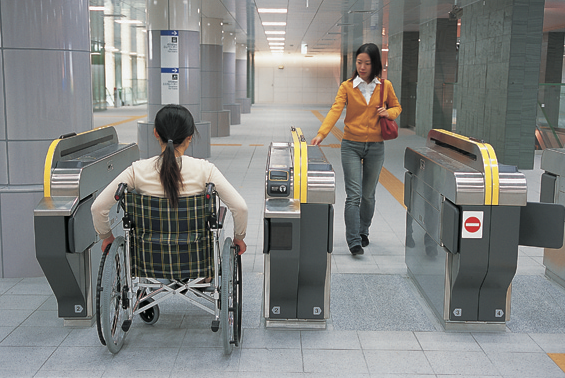Real examples and case studies
Although we have focused a bit on websites and apps, it is important to notice that accessibility goes beyond online services and products. In the following section, you will find a few cases to illustrate how well companies have been designing their products and services based on accessibility knowledge.
Fukuoka City Subway
In a 10-year project, the Fukuoka city subway in Japan made public transportation accessible to millions of people. The idea was to create an environment of good mobility and fewer barriers, in addition to making information easily understood by everyone, as you can see in the following image:

Institute for Human Centered Design and DOGA (Design and Architecture Norway) Project director: Toshimitsu Sadamura, GA-TAP. Inc www.inclusivedesign.no
Some of the improvements include:
- Universal line movement: The station layout allows passengers to move freely through the architecture using the shortest route possible. Tickets and exits always lead to...





































































